Why CO2 laser in gynaecology?
The scientific evidence clearly shows that the current laser of choice for gynaecological treatments is the CO2 laser.
Artemédica has one of the best available on the market: Gynelase.
Due to its power, type of light scanning allowing maximum power with each pulse, and its fractionation capacity, Gynelase/Silklase is one of the most effective and safe devices.
In the specific field of gynaecology, it is one of the few lasers to appear in the scientific studies that increasingly evidence the efficacy of CO2 lasers.

Applications of the CO2 laser in gynaecology, aesthetic gynaecology and regenerative gynaecology
The main applicatons are:
- 1. Vaginal dryness and/or atrophy
- 2. Urinary incontinence
- 3. Vaginal relaxation or hyperlaxity
- 4. Lichen sclerosus
- 5. Elimination of genital warts
- 6. Vaporization of cervicitis and cervical dysplasia and ectopia
- 7. Genital prolapse
- 8. Genital whitening
- 9. Treatment of recurrent vaginal infections
- 10. Intimate female surgery
The CO2 laser is the treatment offering the best results in regenerative, functional and aesthetic gynaecology.
It is one of the most versatile treatments in the specialty.
The possibilities are almost unlimited, thanks to its great vaporization, ablation, cutting and coagulation capacity.
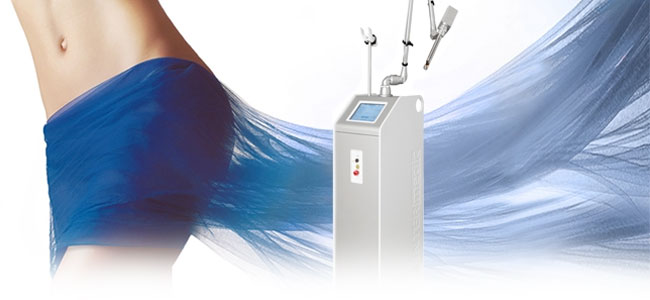
1.- Vaginal atrophy and dryness. Vaginal rejuvenation.
The vaginal CO2 laser is currently the best treatment for vaginal atrophy and dryness.
Although usually regarded as synonymous, vaginal atrophy and dryness are not the same.
Vaginal atrophy is characterized by thinning of the vaginal epithelium, altering its ecosystem and function, and in addition to other consequences gives rise to vaginal dryness.
Since this disorder is generally experienced in menopause, which unfortunately is still regarded as associated with aging, the CO2 laser treatment of vaginal atrophy and dryness is popularly and commercially known by the not very fortunate term of vaginal rejuvenation.
The disorder is usually caused by a hormone deficit such as that observed during menopause and is accompanied by a number of important symptoms such as burning sensation, itching, pain during sexual intercourse to the point where intercourse becomes impossible, and other no less relevant conditions such as increased susceptibility to both urinary and vulvovaginal infections, prolapses or urinary incontinence.
Vaginal dryness is not exclusive of menopause, however. An increasingly larger number of younger women present alterations of the vaginal lubrication system, with impaired function that consequently leads to complaints of vaginal dryness. The cause is commonly also hormonal, as in women who use hormonal contraceptives, but there are many other idiopathic cases in which no apparent cause is identified.
Until recently, the few available treatments were creams and vaginal tablets - some of which even proved effective. However, the problem with these treatments is the lack of adherence, since the patients end up abandoning a treatment that requires attention every day.
The vaginal laser was subsequently introduced as one of the most effective treatments in a growing specialty such as Regenerative and Functional Aesthetic Gynaecology.
The cellular regeneration capacity of CO2 laser treatment of the vaginal epithelium, together with the persistence of its effects over time, currently define this technique as the best alternative for treating all these disease conditions within the so-called genitourinary syndrome of menopause.
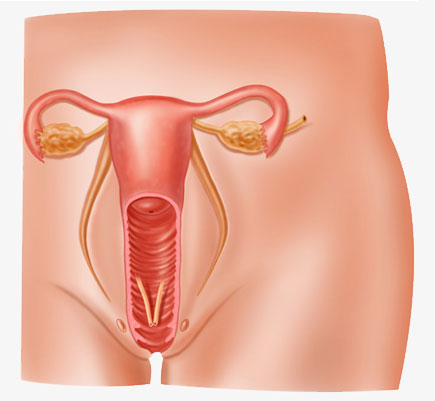
2.- Urinary incontinence.

The vaginal CO2 laser is currently the treatment of choice for female urinary incontinence.
The procedure is non-invasive, painless, and is able to generate collagen in the connective tissue that affords support and closes the urethra. It is a physical procedure that stimulates the synthesis of new collagen in the connective tissue surrounding the urethra, contributing to its anatomical and functional closure, and thus avoiding urine leakage.
Independently of whether urinary incontinence manifests isolatedly or is accompanied by conditions such as vaginal dryness, hyperlaxity of prolapse, the CO2 laser is the treatment of choice, since it is able to treat all the disorders at the same time.
All this is done in the clinic on an ambulatory basis, without having to enter the operating room and without leaving physical elements in the tissues, such as bands, tapes or meshes which over the long term can give rise to more problems.
The classical treatments for stress incontinence basically involve strengthening of the pelvic floor. In the past, this was only possible at muscular level through physiotherapy, and in more severe cases at connective tissue level through surgeries in which a mesh or tape was placed parallel to the urethra with the purpose of generating more collagen at this level, thereby improving urethral support and closure. Such surgery proved effective against incontinence in a considerable number of cases but did not address the problem of atrophy. In addition, the presence of tapes or meshes in the tissue ultimately tended to cause pain during sexual intercourse (dyspareunia), thus in the best of cases avoiding urine leakage but worsening the sexual health of the patient.
In view of the above, it is clear that the vaginal CO2 laser is currently the treatment of choice for female urinary incontinence.
This treatment in the case of urinary incontinence is offering very satisfactory results, exceeding the expectations for this type of disease. Furthermore, it is being shown to be effective not only in urinary stress incontinence but also in urinary urgency and in mixed incontinence.
Unlike expected, we are seeing that the results are not always better in the less severe cases, but that the outcomes are very individual. Despite this, however, our recommendation is to not postpone treatment until things get worse, since waiting in the case of incontinence only leads to increased severity of the condition and thus to theoretically poorer outcomes that make it more probable to have to finally adopt surgical measures that are less effective and have more risks and side effects.
3.- Vaginal relaxation or hyperlaxity
Currently the only effective treatment for vaginal relaxation or hyperlaxity syndrome is the vaginal laser.
Vaginal hyperlaxity is characterized by vaginal enlargement sensation with a loss of friction during sexual intercourse, and in many cases the existence of undesired sounds both during and outside sexual intercourse.
Although the diagnosis is subjective and therefore difficult to quantify scientifically, it is known to be a frequent disorder that unfortunately is not given the importance it really has for the patient.
Although this problem may occur at any time during the life of the patient, it is more common after delivery. For this reason, vaginal tightening treatment as part of recovery after birth is known as postpartum laser therapy.
Intravaginal laser stimulation of collagen production by the connective tissue fibroblasts results in vaginal tightening that corrects this situation without the need for surgery such as vaginoplasty.

4.- Vulvar lichen sclerosus
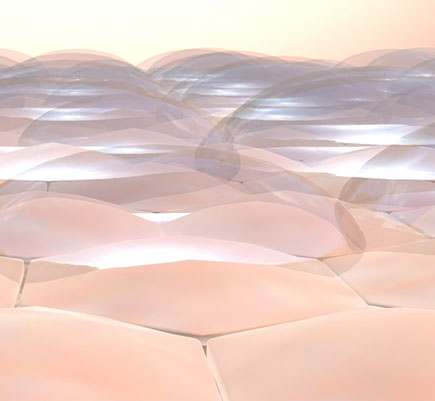
The CO2 laser is the great treatment alternative for vulvar lichen sclerosus, a common disorder for which conventional medicine has no effective therapy.
Lichen sclerosus is a chronic skin inflammatory condition of unknown origin in which the skin clears, hardens and becomes dry, causing pruritus or intense itching.
As the disease advances, the skin experiences atrophy and retraction, thereby altering the normal anatomy of the vulva. The labia minora may even disappear, with burying or embedding of the clitoris and urethra. The entry to the vagina narrows and hardens, making penetration impossible.
Although lichen is not intrinsic to the vulva, it is very characteristic of the latter, and is possibly the most common dermatological condition in gynaecology.
It is most frequent in women in their fifties, though it may appear at any age and even in little girls.
The disorder must always be distinguished from other vulvar diseases characterized by similar symptoms, such as squamous cell carcinoma of the vulva. A biopsy is therefore required.
Once diagnosed, the reference treatment remains high potency corticosteroids (clobetasol). However, in many cases such treatment is not fully effective; some patients are refractory to treatment, or the lichen may evolve despite therapy.
In all these scenarios, the CO2 laser offers a treatment alternative that is seen to be increasingly effective, since it greatly reduces the symptoms, improves the clinical appearance, and in most cases is able to arrest progression of the disease.
5.- Elimination of genital warts
Vaporization with the CO2 laser is the treatment of choice for warts and for almost any other benign lesion in the genital region.
In its vaporization mode, this treatment offers an alternative that is rapid, non-invasive and clean versus conventional surgical removal.
In the genital and perianal region, practically all warts are represented by condyloma acuminata produced by the human papillomavirus (HPV), though other types may also be seen, including elevated lesions of a non-viral origin that are likewise best treated by vaporization.
Vaporization with the CO2 laser
The CO2 laser vaporizes the warts, eliminating them entirely.
The treatment is carried out in the clinic under local, topical or infiltrating anaesthesia, and depending on the number and extent of the lesions, the procedure is usually brief and simple.
In the great majority of cases there is no subsequent patient discomfort and no remaining scar.
Surgical removal
Surgical removal of genital warts is also possible, and in this case, we likewise may use the CO2 laser in surgical mode.
Nevertheless, the use of surgery for warts is increasingly less common, due to the easy removal and better outcomes obtained through vaporization with the CO2 laser.

6.- Vaporization of cervicitis and cervical dysplasia and ectopia
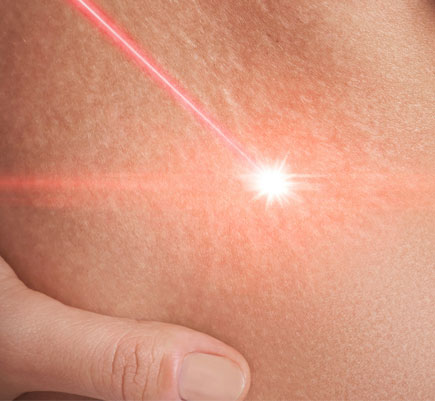
Vaporization with the CO2 laser is becoming consolidated as the treatment of choice for cervical lesions such as cervicitis and ectopia.
These are lesions that usually cause intermittent bleeding, particularly in relation to physical exertion or - more commonly - sexual intercourse. Patients suffer inflammation of the cervix that alters its architecture and results in bleeding in response to minimal friction or pressure.
Vaporization of the upper layers of the cervix eliminates the inflammatory tissue, resulting in resurfacing of the cervical epithelium, i.e., producing a new and healthy mucosal layer.
This mechanism of action has also led to the idea that cervical vaporization may eliminate human papillomavirus (HPV), which is often the origin of these lesions and is the cause of cervical cancer and of the dysplasia that precedes cancer.
These cellular alterations can only be diagnosed through cytological study, for while HPV usually produces condylomas in the skin of the external genitals and anus, at cervical level it gives rise to cellular dysplasias that are not visible to the naked eye.
There are already a number of studies that endorse the idea that the CO2 laser can help eliminate HPV in these situations. The vaporization of cervical lesions is therefore becoming increasingly used in cases of HPV infection with cervical lesions.
7.- Genital prolapse
The vaginal laser is an effective treatment for mild to moderate genital prolapse affecting the uterus, bladder or rectum.
As in the case of genital infections, the improvement of prolapse has been observed as an added positive effect as increasing experience has been gained with the vaginal laser in treating other disorders such as urinary incontinence or hyperlaxity. In vaginal tightening, both the bladder and the rectum or the uterus itself tend to be repositioned in their anatomical location before prolapse, and closure of the vaginal introitus is also restored.
In the case of genital prolapses it is clear that lesser prolapse is associated with greater treatment success with the vaginal laser. It is therefore important to point out to our patients that if they feel that they may be candidates for this kind of treatment for their genital prolapse, they should not postpone treatment, since prolapse on its own can only get worse, and high-grade prolapse can only be resolved through surgery.

8.- Genital whitening

The CO2 laser is the most effective genital whitening treatment.
Although this treatment is most commonly referred to as genital whitening (anal whitening, vulvar whitening, perineal whitening), we prefer to use the term genital clearing, which is more medical and above all more precise, since the treatments produce more or less clearing of the skin in the treated zone - depending on the individual - but do not produce whitening, which on the other hand would surely not be the desired effect.
The genital laser eliminates the most superficial layers of the skin that are generally darker, and also increases skin permeability, allowing depigmenting chemical agents to penetrate more deeply into the skin. For this reason, the treatment must be continued with topical depigmenting products at home, to complete the process and prolong the effect.
As the skin tone clears, it is up to the patient to decide whether further sessions are needed or not.
9.- Treatment of recurrent genitourinary infections
Chronic recurrent vaginal infections as well as recurrent urinary infections can benefit from treatment with the vaginal laser.
As in the case of genital prolapse, the protective action against infections has been observed as an added positive effect of vaginal laser treatments in patients with conditions such as vaginal dryness or urinary incontinence. In most cases, the patients experience these problems within the context of the so-called genitourinary syndrome of menopause, which usually includes recurrent vaginal as well as urinary infections. However, in other cases the patients are younger women not of menopausal age and with recurrent vaginitis and/or vaginosis.
The effect is so clear that nowadays this treatment is already indicated for such cases of chronic or recurrent genitourinary infections in women of both menopausal and non-menopausal age.
Among other benefits, the regenerative effects at vaginal mucosal level restore an adequate ecosystem that is able to defend itself against pathogenic flora on its own.
The explanation is found in the increase in superficial cells of the vaginal epithelium, with greater cell desquamation and a higher glycogen concentration that nurtures the saprophytic flora of the vagina. The result is an improved vaginal flora that is better prepared to defend its environment.
In turn, the formation of new collagen ensures better vaginal and urethral closure, thereby reducing the penetration of pathogenic agents.
Artemédica has one of the best gynaecological lasers available on the market: Gynelase, and possesses extensive experience is solving gynaecological problems.
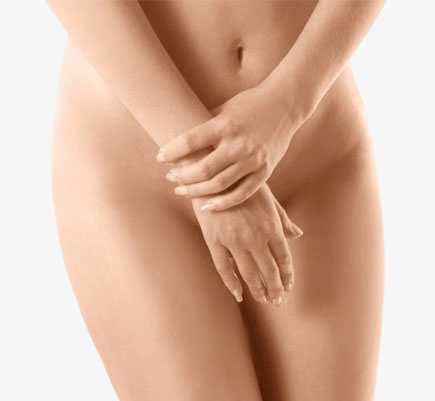
10.- Intimate female surgery

The CO2 laser is able to cut and coagulate simultaneously, and therefore operates in a fine, minimally invasive and very hemostatic manner, representing a great option for gynaecological surgeries.
The gynaecological surgeries that most often involve the use of the CO2 laser are:
- labiaplasty
- clitoral hood surgery,
- bartholinitis drainage or
- removal of Bartholin cysts,
- repair of episiotomies or episiorrhaphies
- ablation of trigger zones in “vulvodynia”
and almost any kind of surgery in the zone.
How the CO2 laser works in gynaecological treatments
The CO2 laser basically works through three mechanisms of action
- Regeneration: the essence of its action, tissue ablation stimulates the formation and regeneration of new healthy tissue
- Vaporization:, literally the transformation of tissue into water vapor
- Cutting and coagulation: the basis of surgery
1.- Regeneration
In vaginal atrophy, urinary incontinence, vaginal relaxation, whitening
The CO2 laser is one of the clearest examples of Regenerative Medicine.
It emits light at a specific wavelength that can penetrate the vaginal mucosa without damaging the surrounding tissues. This is the mechanism whereby it treats both urinary incontinence and vaginal atrophy and dryness.

In application to the vulva, the mechanism of action is the same, and in this case the laser improves the appearance of the skin of the labia majora, exerting a rejuvenation effect and also (for example) clearing the skin tone or minimizing scars such as those of past hidradenitis or episiorrhaphy in the context of childbirth.
In the mucosa:
The energy is transmitted through a scanner, performing random thermal microlesions that leave healthy tissue between them. The repair of these vaginal epithelial microlesions involves the generation of abundant new collagen that in turn affords new support for the entire vaginal structure and thus of neighbouring organs such as the bladder, urethra or rectum.
The number of layers of the vaginal epithelium increases, and this restores the function of the glands in charge of lubrication, as evidenced from the histological sections.
The vaginal mucosa is repaired with fully restored tissue, with the multiple layers it had before atrophy, and with its corresponding glandular elements - thus restoring vaginal mucosal health, lubrication and function.
In the more internal layers:
The energy of the CO2 laser in turn is transmitted to layers deeper than the mucosa, such as connective tissue, fascias and apparently also to the muscle layer, where it can stimulate regenerative mechanisms and the production of proteins such as collagen and elastin, thereby also restoring vaginal anatomical health, tightening the vagina and restoring prolapses, and also functional health, as for example referred to urinary retention.
These results have been evidenced from histopathological studies of biopsies obtained after the treatments and have been published in the scientific literature.
2.- Vaporization
In the elimination of genital warts, ectopia, cervicitis and cervical dysplastic lesions
The laser ablation effect eliminates tissue layers through vaporization or their transformation into water vapor. This makes the laser ideal for eliminating raised lesions on the skin, such as genital condylomas or any other dermatological lesions that may be located in the genital zone or anywhere else on the skin.
3.- Cutting and coagulation. Surgery
For intimate female surgery, Bartholin cyst surgery, abscesses, etc.
The CO2 laser is able to cut and coagulate in a precise, fine, minimally invasive and very hemostatic manner, thus representing a great option for both gynaecological surgeries and labiaplasties or clitoral hood surgeries, or plastic surgeries such as blepharoplasty.
Frequently asked questions
The treatment is intravaginal and is applied with a cylindrical headpiece that can access all the vaginal walls with the help of an internal mirror.
The patient can return to her normal life after the treatment, with minimal or no discomfort.
Yes, there are highly effective solutions.
For further information, consult this page.
Related treatments
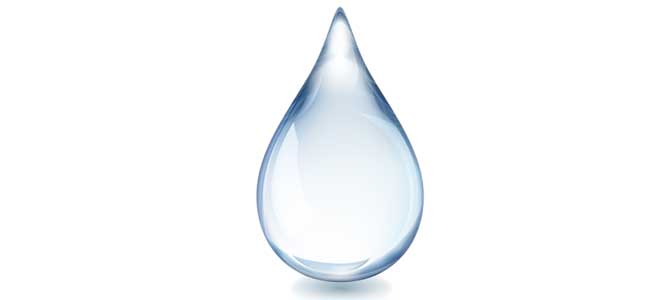
Vulvar and vaginal hyaluronic acid
Following extensive experience gained in aesthetic medicine, it has been incorporated to gynaecological practice, and not only for aesthetic purposes.
It is also used to regenerate and improve female genital function as in vaginal and vulvar atrophy and dryness.

Hymenoplasty
The purpose of this technique is to restore the hymen membrane so that it can rupture again and cause bleeding in the next sexual intercourse.
There are different surgical techniques for reconstructing the hymen - both conventional and involving the use of the CO2 laser.
Artemédica, center for aesthetic, functional and regenerative gynecology in Murcia
The objective of this medical discipline is to improve the health, quality of sexual life as well as the aesthetics of the female intimate areas.




